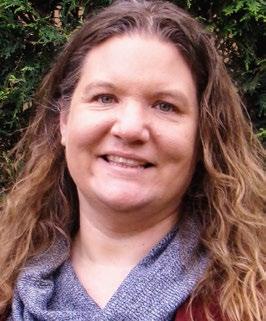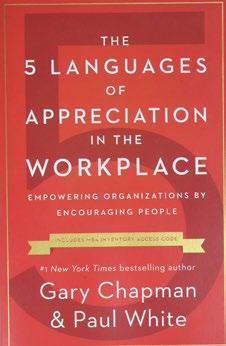
7 minute read
5 Ways School Culture Can Shine
Article
Paula Jablonski, M.Ed
5 Ways School Culture Can Shine During the Hiring and Onboarding Process
Culture and climate don’t announce themselves with a megaphone or a giant fireworks display. They’re not the “Heroes work here!” banner on the front of the building, or the fancy welcome doormats.
Culture and climate can be felt by anyone walking through a school’s hall. They live in the way our team members talk about who they are and what they do. They grow with each interaction with students, with visitors, and with each other.
Positive and supportive school culture is built slowly and carefully. It needs to be cultivated and nurtured—and it starts long before a new teammate walks into their first day of school. With carefully crafted interviews and purposeful onboarding strategies, we can ensure that our newest teammates will both embrace and enhance our school’s culture.
#1: The Questions We Ask, Part 1: Interview show and tell
Interviews are as much about helping candidates envision their place in our schools as they are about finding the right person for the position. By tailoring the
questions to reflect what’s important to our program, we also communicate our priorities and learn whether our candidates are a good match.
We ask interviewees to talk about how they might address a conflict with a peer, so we can talk about our values of teamwork and open communication. We ask what they value in a supervisor, to make sure that our leadership styles match their learning styles. We ask candidates to tell us about the last thing they read that had an impact on them, so they know that we prioritize ongoing learning. The interview becomes a
conversation that allows us to learn from each other.
Over the last several years, our school leadership team has carefully and deliberately cultivated a school culture and climate that emphasize teamwork and support, value diverse perspectives, and support personal and professional growth—and we make sure our interview questions, and the rest of our onboarding process, communicate that.
#2: Our Welcome Deck: Not your average slideshow
After our newest teammates accept their positions, I send out a personalized welcome email with a link to a “Welcome to our Team” slide deck. We know they’ll get all the pertinent pieces from their HR orientation and paperwork blizzard. So, the slides are a mix of things we want to make sure our new folks know before they walk in the door and the things we think they want to know, presented in a fun and informal way.
The slides include our mission and philosophy, videos of students and team members, and links to our social media
pages. We include names and faces of important people in the building and first-day expectations. We also walk new hires through some basic to-dos to get the ball rolling, including signing up for our school-wide team text updates, and sending me a text so I know we have each others’ numbers.
What does all this tell our newest team members? Hopefully, it conveys our values, our culture, and our program
personality. It communicates our shared excitement about their new adventure and helps to put them at ease as their first day approaches. It tells them what we expect from them, but also what they can expect from us. At its core, it communicates warmth and transparency and hopefully continues to build connections with our newest teammate.
#3: The Questions We Ask, Part 2: All About You
One of the things that new hires will find in those Welcome Slides is a link to our “All About You” survey. It’s a quick Google form that gives us a chance to learn a little more about our new teammates, and what’s important to them. It also tells them what’s important to us. Some of our prompts include: • Favorite sweet and salty snacks, coffee/ tea order, allergies, and diet restrictions - This gives us plenty of options to tailor midyear pick-me-ups. • T-Shirt size - Everyone loves school swag, especially in their first week at a new place! • Preferred name/nickname - I’ll call you whatever you want to be called, as long as it’s school-appropriate.
• Pronouns - Diversity, inclusion, and respect are valued strongly across our programs, and this is a clear way that we can continue to communicate that. Our new hires and seasoned veterans complete this survey each year, since preferences (and t-shirt sizes!) may change over time. I share everyone’s responses, minus anything they might indicate as private, with our school leadership team, so that we can build support and encouragement from multiple directions.
#4: Two-Four-Six-Eight: How do we appreciate?
The last, and arguably the most important, questions on the All About You survey, help me to understand the ways our team members most feel appreciated. Based on The 5 Languages
of Appreciation in the Workplace
(Chapman and White, 2019), I ask them to rank their preference for each Appreciation Language using a five-point scale (Absolutely, Sometimes, Neutral, Not my favorite, Not at all).

Click to view on Amazon.
Why is this important to me? When I first read The 5 Languages, I was floored. I realized that if I wasn’t showing my team appreciation in the way they best received it, it might not even be received at all. By understanding
the way my team members best accept appreciation, I can make sure that I’m doing all I can to help them feel supported.
Meanwhile, the fact that I’m even asking the question demonstrates our desire to support and strengthen our team members in the ways that they need. It communicates the value of support for each other that we nurture within our school culture and climate.
#5: One last thought: It’s worth the wait.
In the current landscape of COVID spikes, adaptive pauses, and labor Here’s the thing: I can count on one hand the number of times those “maybe” candidates have surprised me with a strength and passion we had somehow missed in the interview. More often, they’re not quite the right fit, and that affects everyone from the admin team to their teaching peers and classroom paraprofessionals. That not-quite-right fit can be exhausting
shortages some leaders are facing lists of openings longer than ever before. Over the years, we’ve often found ourselves in the position of desperately needing to fill a spot on the roster, period. It’s in these moments, that the “maybes” of the interview piles are most tempting. They’re not the amazing candidates who jumped off the page and into our offices or across our computer screens, and who was practically hired before the interview was even complete. Instead, they’re reasonably qualified candidates for the position, they show some potential, they’re available—and we have spots to fill.
and disheartening, and can negatively influence the team’s morale and the building’s overall atmosphere.
Holding an open position on the roster has its disadvantages, to be sure. But it’s worth the wait to find the right candidate. It’s worth the wait to find someone who believes in what we do, who embraces our mission, who is passionate about our students, and who will help push us to be better. It’s
worth the wait to find someone who will positively contribute to our team and values, and whose presence will strengthen our culture and climate.
From the initial interviews to a new hire’s onboarding and the first day of employment, school leaders have opportunities to embed school culture into each interaction with new team members. When we purposefully choose to weave our school culture into the hiring and onboarding process, it drives us to bring the strongest candidates into our buildings and choose the best people for our students, teams, and schools. Dr. Paula Jablonski, M.Ed, is the proud principal of PACTT Learning Center, a nonpublic special education program in Chicago for students with autism. The best part of her job is working and learning alongside an incredible group of passionate, dedicated, and supportive educators. When she’s not working, she’s probably dreaming about her next travel adventure.











